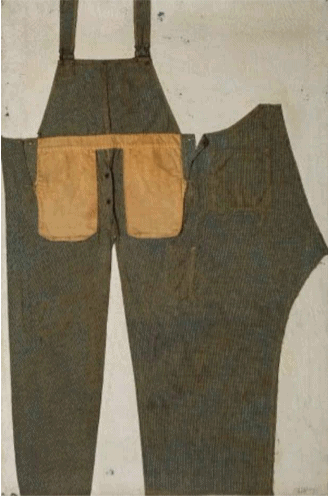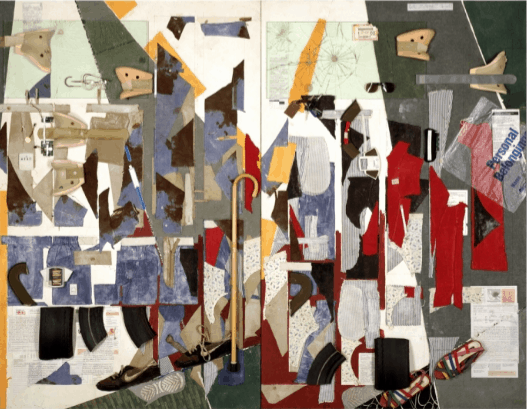
LEBANON, NEW HAMPSHIRE—AVA Gallery and Art Center, located at 11 Bank Street in Lebanon, New Hampshire, is pleased to present the exhibit Charles Platt: A Commemorative Retrospective, on display from Oct. 23 through Nov. 27 in their named gallery spaces, Rebecca Lawrence Gallery, the Clifford B. West Gallery, the E.N. Wennberg Gallery and the Elizabeth Rowland Mayor Gallery.
A graduate of Harvard College and the Graduate School of Design at Harvard, Charles Platt (1932 –2020) was an award-winning architect in New York City, founding the firm Platt Byard Dovell White.
Platt’s career as an artist was closely aligned with his career as an architect. He approached both with the same highly tuned visual ability, seeking to bring the balance and beauty of the world into focus for those around him.
Platt began his work in collage in 1959, when he discovered a pair of workman’s overalls hanging over a blank piece of canvas. He was immediately struck by the image, and it later became his first piece, “The Hired Man.” Since then, he has furthered this study of the relationship and meaning of objects, working them into compositions with a focus on the nature of the objects themselves, saying that he formalized and arranged “memories and thoughts through the discarded clothes and objects of places and people’s lives.”

Though his palette was an accidental array of discarded clothing, blankets, and household items, there was nothing random about his arrangements–they were meticulously composed descriptions of a space he had sketched or imagined. In describing his process, he stated that after the initial conception of an idea “there follows an extended period of development, sketching, refining the whole and describing individual parts of the work, tracing, retracing, and adjusting, pretty much the way [he worked] as an architect.” He has been quoted as saying that he was an architect by profession but an artist by choice.
Upon viewing his work, one delights in the pure abstract composition and, upon entering more closely, one discovers fun and humor, with objects splayed and spliced, then layered and juxtaposed together. The objects are restructured, cut open to reveal their inner mechanics, and transformed to new shapes with new associations. It is in these small details that Platt evoked powerful responses in the viewer, sometimes using them to narrate the piece. The relationship of the patterns is as important as this evocativeness: the viewer’s eye is intentionally drawn to certain areas, exposing things that may have been missed at first glance.
The Platt family has had a long association with the Upper Valley that began when the artist’s grandfather, Charles A. Platt, moved to Cornish, New Hampshire, with other creatives who gravitated to the area following the arrival of sculptor Augustus Saint-Gaudens in the late 19th Century. This loose group of artists, writers, performers, architects and landscape designers became known as the Cornish Art Colony. Charles A. Platt designed homes in Cornish and Plainfield for other members of the colony and was famous for integrating the interior with the exterior through architectural elements in the gardens he also designed. The family has maintained a presence in Cornish for four generations. Platt was also a member of the board of trustees and former president of the board for the Augustus Saint-Gaudens Memorial at the National Historic Site.
Please join AVA Gallery from Oct. 23 – Nov. 27 and celebrate the work and life of Charles Platt. For further information, contact Heidi Reynolds, [email protected], or 603-448-3117.



